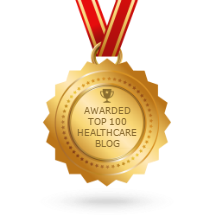
Superbugs, or antibiotic-resistant bacteria, are posing an increasingly difficult challenge for healthcare facilities. Some bacteria are resistant to certain classes of antibiotics. Some are resistant to all but the strongest, and often most expensive, antibiotics. These superbugs are called MDR, multiple-drug-resistant. Others still, while very rare, are resistant to all known antibiotics. One example, carbapanem-resistant Enterobacteriaceae (CRE) is resistant to even the most powerful antibiotics, has high mortality rates, and can easily spread its superpowers to neighboring organisms.
So how do we keep helping create these superbugs that are so hard to kill? And what can we do about it?
WHAT WE CAN'T CHANGE (at least for now)
1. Bacteria evolve resistance naturally.
The random mutations that lead to superpowers happen naturally, as part of the organism's method of reproduction and the sheer speed of growth through generations. Just as any organism adapts and evolves for survival, so does bacteria. It just happens way, way faster for bacteria.
2. Bacteria go from being Jeeps to tanks when under heavy fire.
There are ranges of abilities in bacteria, but the superpowers are present only in war zones - healthcare facilities. The Jeeps of the bacterial world are your non-resistant organisms like S. aureus - fast-growing, flexible, and adaptive to their environment. These guys drive around us all the time and do little harm (can cause infections but normally respond well to treatment). However, those that have mutated to a resistant strain, such as MRSA, are not as flexible or adaptive to their environment, but they can survive exposure to some antibiotics. These are the Hummers of the bacteria world and are found in healthcare facilities, nursing homes, and other locations where antibiotics are used. Finally, we have our bacteria tanks, MDR Acinetobacter or CRE, which grow slowly and not as flexible but can sustain and survive under prolonged attacks from multiple antibiotics. These are lethal, weaponized superbugs found in healthcare settings.
WHAT WE CAN CHANGE (yes, even you!)
1. Overuse of antibiotics (including in agriculture).
The first step in creating superbugs is to use antibiotics too often. This means using them when they are not needed, such as to treat a virus (antibiotics do not kill viruses). Each time antibiotics are used, they do kill bacteria. This gives resistant bacteria an opportunity to suddenly have no competition and to flourish and multiply. "Antibiotic stewardship" is a movement we can all get behind: Using antibiotics responsibly, and only when medically indicated.
2. Improve infection control practices.
Everyone is on the line with this strategy, from all of us in our homes to healthcare workers in Intensive Care Units. Handwashing is the best, first defense against acquiring and spreading infection: Regular soap, water, and a good 20-second scrub. Around more vulnerable individuals, using the correct cleansers on surfaces and laboratory-proven biocidal materials kill antibiotic-resistant bacteria and lessen the chance of transmission.
3. Not finishing antibiotics prescriptions.
Believe it or not, every time you don't finish your dose of antibiotics, you take the risk of not only getting sicker, but also allowing a harder-to-kill bacteria to multiply. When you start taking your dose of antibiotics, the medicine quickly goes to work killing off bacteria. Soon, you start to feel better and may consider stopping your antibiotics. But it is just at this point that the balance of bacteria in you is tipping - when the dose hasn't quite killed off all the bacteria, so the strongest strains remain. If you stop your dose, those bacteria quickly reproduce. This leads to more resistant bacteria being created.
Why should you care about antibiotic resistance?
Imagine going back in time, before the discovery of penicillin, say, 1900. That year in the United States, the leading causes of death were pneumonia, tuberculosis, diarrhea and enteritis, leading to 33% of all deaths. All are curable with antibiotics. Today, they account for less than 4%.
The effect of antibiotics on overall health, life-expectancy, infant and maternal mortality, and recovery from surgery is astounding. And yet, this world-changing treatment is under grave threat from the creation and persistence of antibiotic-resistant bacteria.
If someone is infected with a multiple-drug resistant bacteria, there is nothing left in the doctor's arsenal to treat the infection. Surgery to remove the infected tissue may help. but there is no guarantee. (Watch PBS's Frontline "Hunting the Nightmare Bacteria" if you aren't convinced!)
Without antibiotics, we would return to a world where infection means certain tragedy and death. We are already living in an era where approximately 99,000 individuals die from infections they contract from a hospital stay, and 35,000 individuals die from infections which did not respond to antibiotics.
Let's all do our part by not abusing antibiotics and finishing our prescribed doses!


